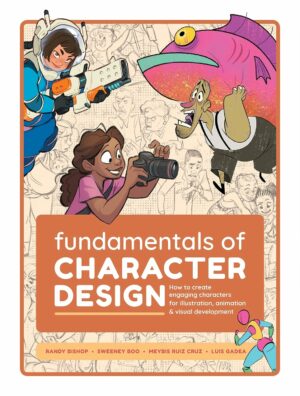As a game designer or new media storyteller, you know that the story is everything. However, figuring out how to tell it interactively-and in a way that keeps your audience coming back for more-can be challenging. Here to help you out (and to open your mind to ever more creative ways of producing those stories) is the man who created the cult publication The Art of Computer Game Design and who has devoted much of his career to that very topic: Chris Crawford. To highlight the path for future gains in the quest for a truly interactive story, Chris provides a solid sampling of what doesn’t work, contrasting unsuccessful methodologies with those that hold promise for the future. Throughout you’ll find examples of contemporary games that rely on different technologies-and learn the storytelling lessons to be garnered from each of the past methodologies. Within the context of interactive storytelling, Chris explores ways of providing conflict and challenge, the difference between low- and high-interactivity designs, the necessity to move beyond purely visual thinking (so that the player is engaged on multiple levels), and more.
Read more









OmnipotentObjector –
Chris is a great man, but this book is a real piece. I expected to be inspired to make games, but all I was inspired to do was stop reading. Don’t read, or even look at this book.
Jonathan Beyrak Lev –
If anyone can write a book on interactive storytelling, it is Chris Crawford. He has a career of pioneering in the field of interactive entertainment, and is the creator of the first and only interactive storytelling technology publicly available.
This jewel is a humorous, intelligent overview of the current state of Crawford’s fourteen-years-long research into the subject. Choosing to present the material in this way – as a status report with many loose ends and as many questions as answers, shows great honesty and modesty – and it also allows the author to concentrate on what he does know instead of trying to conceal what he doesn’t. In an intellectual field populated by many instant experts and charlatans, this work really stands out.
But don’t get me wrong – Crawford knows a great deal about the subject. Perhaps the greatest benefit that you’ll derive from this book is learning how not to think about interactive storytelling. For example, it shows why one shouldn’t think about the subject in terms of other artistic media, including literature, theatre and cinema, as well as computer games, interactive fiction and hypertext literature. Even before I was aware of Crawford’s work, I had been very interested in interactive storytelling. While reading this book I found that I had been making many mistakes in my thinking that were obviated by Crawford’s lucid arguments and explanations. The man saved me years of cogitation.
Crawford also presents several of the chief concepts that have guided his research. He offers the best definition of interactivity that I’m aware of, and explains how it can be combined with stories. He makes many important points about the nature of the artistic works resulting from such a combination. All of these ideas are highly valuable, and allow the reader to ask the right questions, which is all one could ask for, since, as yet, no one has most of the answers.
The author also presents the core technologies required for any interactive storytelling system to be successful, and explains their function and role in the system. This explanation is thorough but not overly technical, and really helps to create a practical grounding for all the book’s theories.
There are also several smaller topics addressed in the book, like an overview of other research projects on the subject, and a discussion of the mindset required from an interactive storyteller.
This work is a mirror image of Crawford’s project – a state-of-the-art work-in-progress filled with inspiration and insight and based on a great deal of expertise attained through trial-and-error. It is also infused with Crawford’s excellent sense of humor.
This book is a must read for anyone interested in the great adventure of birthing a new artistic medium.
Professor –
Here’s a discussion that makes excruciatingly clear how much ingenuity has to go into dealing with the inherent limitations of interactive programming.
Raimund Neumann –
Chris Crawford has investigated profoundly on his quest to come up with the ideal story telling machine.
More than the realizable concepts, the energy and persistence the author is pursuing his ideas with is striking.
David H. Walker –
In the spirit of full and open disclosure, I have known Chris Crawford for over twenty years. We are close friends and colleagues. So instead of providing a review, I’d like to comment on some of the things brought up in the other reviews.
In two reviews, it is indicated that the book is not tutorial and doesn’t provide specific examples. These are absolutely correct. “Chris Crawford on Interactive Storytelling” is a distillation and documentation of all that Chris has learned and created on interactive storytelling over the last thirteen plus year. He explores areas where none have gone before and he also explores areas where others have been adding insights that are new. There is definitely material here you won’t find in any previously written book. However, this is a not a document of a completed journey. A couple of simple stories have been built-as proof of concept for the early working versions of the Erasmatron-but they mostly demonstrated the need for better tools. Interactive storytelling requires a new set of skills and tools. This book is heavy on theory and process, but light on examples because the theory and processes must precede the examples-and we’re just getting a handle on the theory and processes. Expect to see examples in Chris’ next book, which I expect he’ll write once the Erasmatron is out the door and pumping out interactive stories. (I’m guessing here, Chris has never mentioned doing another book, but there will definitely be a need for a book on Erasmatron storybuilding and who better to write it than Chris Crawford and/or Laura Mixon?)
William Ogles comments on Chris’ writing style, which is decidedly conversational. His writing style, combined with his strong convictions, often polarizes readers and the attacks against him can be as vicious as the praise is glowing. Chris was a teacher early in his career and lessons learned from those early days drive much of his writing and speaking style. He will present gray area subjects in stark black and white and he writes provocatively. This is his method for making a point and generating thought and discussion.
Indeed, it was his recent article about Women and Gaming in “the Escapist” (an on-line magazine) that provoked the single negative review of this book. The best clue to this is that the reviewer is complaining about Chris’ views on women and gaming, yet that subject isn’t covered in this book. Also the quotes are from his article, not from the book. Chris’ point was that sales of romance novels (especially of the “bodice rippers” genre) and soap opera show that women were the primary customers and that they were immensely popular and that games that appeals to the same needs would be more successful with women than “Doom” clones. It appears to me this is rather obvious-the trick, of course, is figuring out what such games might be. The reviewer’s characterization of the above as “blatant gender stereotyping” is a hard trail to follow and suggests that Chris triggered a hot button for the reviewer.
Also, unlike Chris’ other book “Chris Crawford on Game Design”, this book is not for aspiring “game” designers-it’s for aspiring “interactive storytelling” designers (of all ages) or for game designers that want to move into an entirely new and exciting field.
KHS –
Genial geschrieben. Leider wenig wissenschaftliche Zitate, andererseits ist der Mann ein Vordenker. Das Buch liest sich sehr flüssig und interessant.